Why bad jumping is a story problem
The humble jump is an underrated device in video games, perhaps because we often think of it as functional and mechanical. For such a simple movement, though, it conceals a spike of drama. A running jump across the abyss is, in the right framing, a committed dive into the unknown, with just a whispered hope of landing on the other side. We have the run-up in modern games, even the landing, but the tension in the air between feels fake.
Games like Tomb Raider and Uncharted, both hinging on heroes clambering through old, dead places, steal less from Indiana Jones’ wardrobe than they do his career in cliff-hanging. But they steal badly. That moment of doubt we see in cinema, with an arm, hand, fingers extended as far as they can, hoping to grip the edge of life-saving stone, is now recreated in games as spectacle without risk.
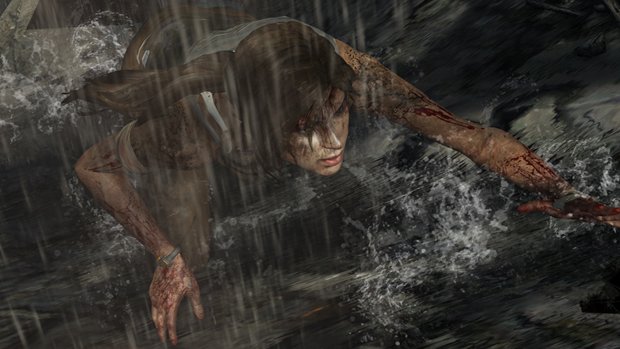
The “risk” is a trick in film, of course, passively brought into mind by framing, cuts and music - but games aren’t film. They’re not as meticulously staged and aren’t nearly as concerned by the awkward death of the protagonist. Why then, as Nathan Drake flies into a cliff like an old car meeting a junkyard magnet, should we be thrilled? It looks like peril, it sounds like peril and, worst of all, the story keeps saying THIS IS PERIL. Somebody is lying.
When Lara Croft first started her career in unsanctioned excavation - and before she was herself excavated for 2013’s Tomb Raider reboot - there was a real kernel of doubt in her steps. With no cinematographer to frame her leaps, and with no script to control your every decision, developer Core Design carved pits and crevices into the world that could either threaten or guarantee Lara’s progress.
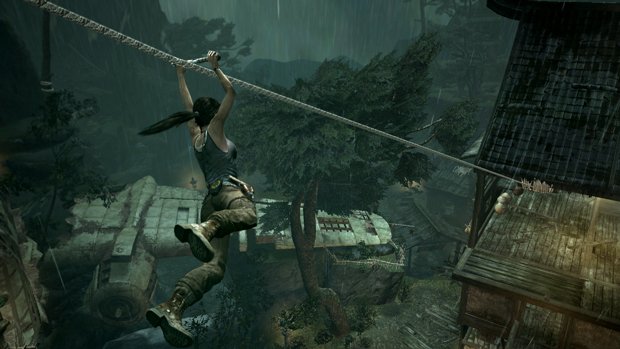
In the original Tomb Raider (1996), the jump is a non-negotiable constant operating in a three-dimensional grid - a world of flat, square surfaces on pedestals. The entire world is a latticework of safe and almost-safe jumps, big enough to make things interesting. A long jump turns fatal if not calculated properly: you need to back up, back up a little more, and get enough of a running start to launch yourself out of your current square and across the crevice du jour. The trajectory and distance are both fixed, so launching too soon turns you into a sad little smear on some ancient slab. You’ve misjudged, but you’ve made a real decision, made a transaction against the game’s rules. If you do fall short, you can press a button to extend Lara’s arm and grab one last inch of forgiveness. It’s a neat idea that returns in the Tomb Raider: Anniversary remake, where developer Crystal Dynamics smartly makes the grab button an optional element of difficulty.
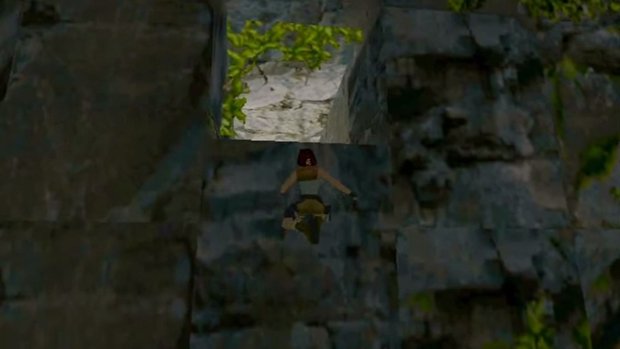
It’s an often overlooked aspect of Tomb Raider’s design, with Lara’s renowned athleticism - a reputation built by the story - becoming reinforced not by what happens, but by what you do again and again. We’re told to execute and repeat on her skill for solving riddles, dodging traps and hoisting herself up from a scary abyss. She’s not just good at it automatically, we’re good at it together. The ideal has since been lost, or changed unrecognizably, even in the modern Tomb Raider.
There’s a classic appeal in heroes that defy death and move so freely through the world, even if you dress them down to just Mario. The excitement is in the movement, of understanding your capabilities and exact position in the level, more so than the animation and quality of presentation. It’s in sensing a weight to your character, their swiftness and airborne arc over a bed of spikes. It’s in believing they occupy a space in the world in front of you.
Sign up to the GamesRadar+ Newsletter
Weekly digests, tales from the communities you love, and more
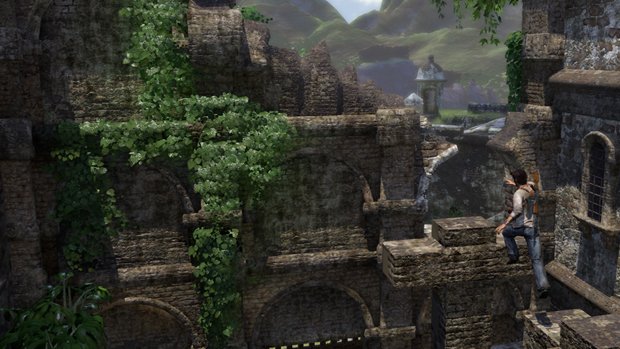
By that measure, modern climbers like Nathan Drake and Lara Croft are not believable, nor are their stories. The world is still built for them to succeed, only much more so as they stick to walls like Spider-Man and travel across gaps predictably, like a train between stations. Just press X, hold forward-ish and you’ll make it. They’ll stumble and grip the edge when the script calls for it, but the room for error – for you – can’t be sensed.
What truly emerges, despite what the script and animation would have you believe, is an irritating lie in storytelling. We’re told Nathan Drake is a man who subsists on foiling death, his fingertips shaved off by rough landings on rocks. We’re introduced to Monkey, the burly avatar of Enslaved: Odyssey to the West, as a wild gymnast skittering across collapsing catwalks. We’re told the men and woman (just the one) of Assassin’s Creed rely on training and a supernatural vision to bounce over rooftops. Thrilling! Except not.
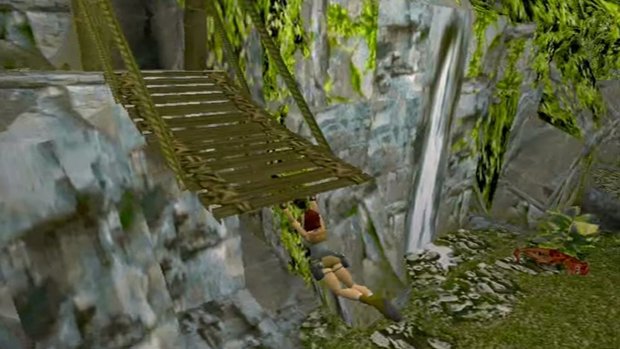
To have the game guide these characters through a primary, crucial motion – a defining part in their role as protagonists and vector for the player – is to erode a small but meaningful element of player authorship. There is no danger for us or Nathan, not even a moment of peril shared between us and Lara Croft. We are shown adept climbing but don’t get to feel it out for ourselves. I am more convinced by Super Meat Boy, a pudgy cold cut with a real sense of momentum behind his leaps, than a photorealistic woman.
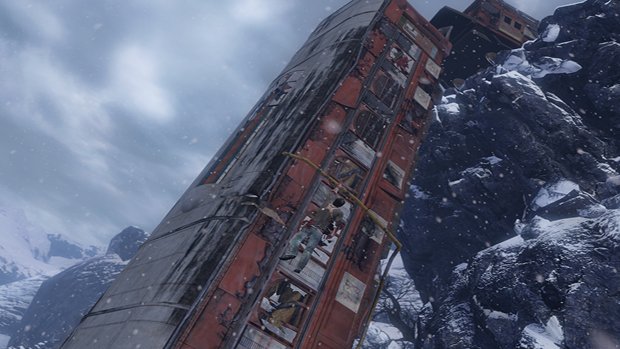
The meaningful jump, the one that nearly makes you hold your breath before landing, can still be found here and there: Mario is still adept at providing levels paced perfectly with well-judged jumps, and Mirror’s Edge is on the verge of return with its own style of vertiginous pouncing. The latter is exemplary of different design and different priorities, of course, but it’s also a sign of better, game-minded writing. If you tell me I can jump, I’d like to find out how high.
Ludwig Kietzmann is a veteran video game journalist and former U.S. Editor-in-Chief for GamesRadar+. Before he held that position, Ludwig worked for sites like Engadget and Joystiq, helping to craft news and feature coverage. Ludwig left journalism behind in 2016 and is now an editorial director at Assembly Media, helping to oversee editorial strategy and media relations for Xbox.



